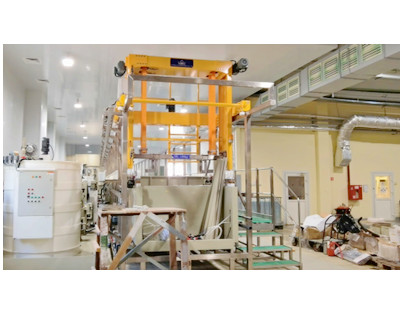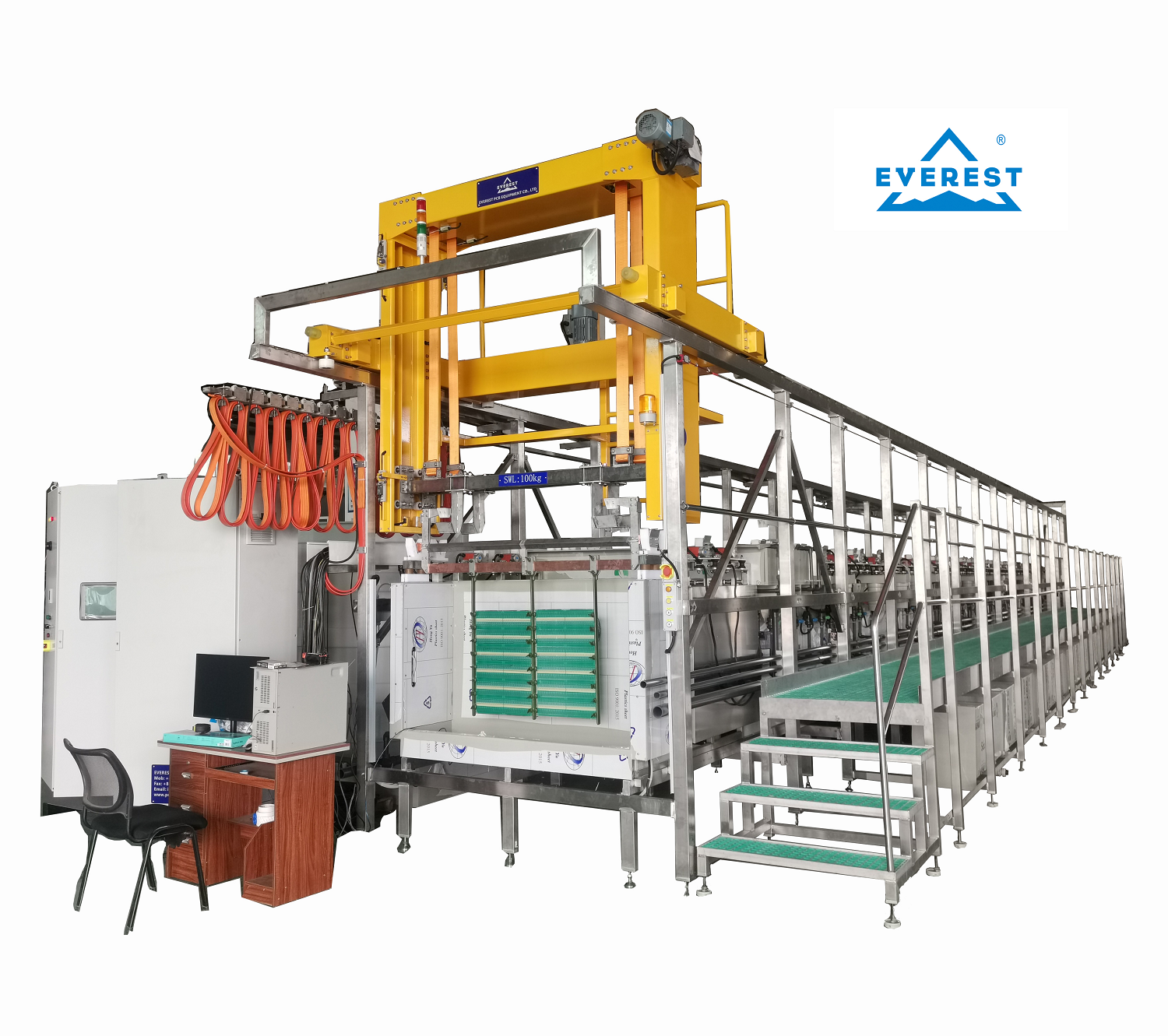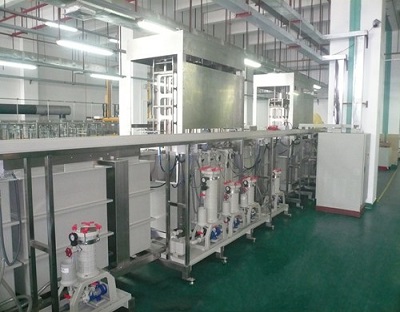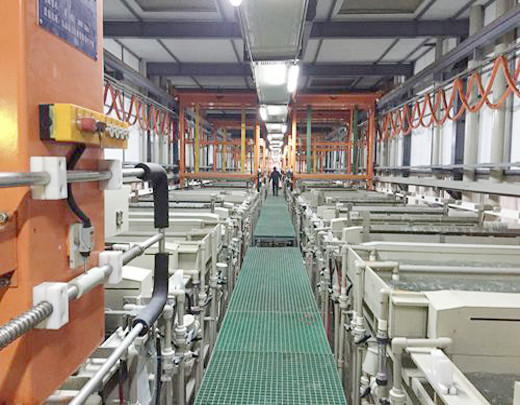I, Process flow
- Degreasing → water rinse→ rust removal activation → water rinse→ hot water preheating → chemical pre plating of nickel phosphorus alloy → water rinse → chemical plating of black nickel → water rinse → post-treatment
- Oil removal → Water rinse→ Rust removal and activation → Water rinse→ Hot water preheating → Chemical black nickel plating → Water rinse → Post treatment
Suitable for direct plating of black nickel on steel, cast iron, and copper alloys, as well as direct plating on stainless steel, electroplated nickel, and electroplated chromium.
When directly plating black nickel on stainless steel, electroplated nickel and other plated parts, activation treatment with concentrated hydrochloric acid or 20% sulfuric acid (30-45 ℃) is required before plating, and the time is not less than 10 minutes.
II, Preparation of working fluid
- Prepare the working solution according to the following formula
Nickel sulfate: 25 g/L
Sodium hypophosphite: 25 g/L
Black nickel additive: 200ml/L
- Calculate half of the total amount of water in the working solution, dissolve nickel sulfate and sodium hypophosphite separately, mix the precipitates, add the black nickel plating additive, stir thoroughly, and then add water to the required volume of the working solution. After fully stirring or filtering, the working solution is obtained.
- Adjust the pH value with ammonia solution to 10-11.
III, Process parameters for plating
- Plating temperature: 80 ± 5 ℃
- Working load capacity: 2-2.5DM ²/ L
- PH value: 10-11, adjusted with ammonia water
- Time: 30-60 minutes
IV, Key points of plating and maintenance of plating solution
- The plating bath needs to be made of acid alkali resistant and high-temperature resistant materials. It is best to cover the plating tank to reduce heat loss and prevent debris from falling in.
- During the plating process, it is necessary to stir frequently, either mechanically or by air.
- During work, the tank liquid needs to be circulated and filtered once an hour. The filter machine should be equipped with specialized equipment, and continuous filtration can play a stirring role.
- Due to the decrease in pH value during plating, it is necessary to regularly check the pH value and adjust it with ammonia solution.
- The plating solution is applied for 1-1.5 hours, and the working solution needs to be added. The amount of plating solution added is 3-5%, depending on the amount of plating and the plating time. After replenishing the working solution, the plating solution can be replenished to the specified position with water before continuing with plating.
- The plating tank should be cleaned regularly, and the cleaning time should depend on the on-site work situation and the severity of sediment on the tank wall. After soaking the plating tank in 3% dilute nitric acid, brush or rinse with clean water.
V, Post processing
- Wash with deionized water, blow dry, and bake at 100-110 ℃ for 30 minutes.
- Immerse in dehydrated rust proof oil.
- After passivation, dry (100-110 ℃) or soak in dehydrated rust proof oil.
- Spray transparent varnish.
The impact on the process specifications of black nickel plating
- Nickel sulfate is the main salt in black nickel plating solution, which can be obtained by ensuring a certain amount of Ni ion concentration. If the Ni ion concentration is too high, it will reduce the proportion of Zn ions in the coating, make the coating color gray, and even appear metallic nickel color. It will also cause the solution to be unstable and have poor dispersion ability; If it is too low, the coating will appear yellow brown and remain black with stripes, resulting in poor bonding ability.
- Zinc sulfate is one of the main salts in the plating solution, and if the concentration of Zn ions is too low, the coating will appear gray; Excessive binding force reduces. According to the production volume, achieve less and more frequent work.
- The influence of pH value is too high, which can cause the plating solution to become turbid and the coating to loosen. In production, it is necessary to regularly measure and adjust the pH value of the plating solution.
- The influence of temperature, low plating solution temperature, poor dispersion ability, and slow deposition speed; The nickel content in the coating increases due to high temperature, resulting in a light yellow color.
- Before entering the plating bath, the parts must be powered on before entering the bath, and current interruption is not allowed during the plating process. At the same time, the current density should be strictly controlled within the process specifications. If the current density is too high, causing the coating to be rough or even burnt, it is easy to cause brittleness and peeling. If the current density is too low, the coating will appear in five colors, sometimes yellow brown with stripes.








 Jul. 23, 2020
Jul. 23, 2020 




